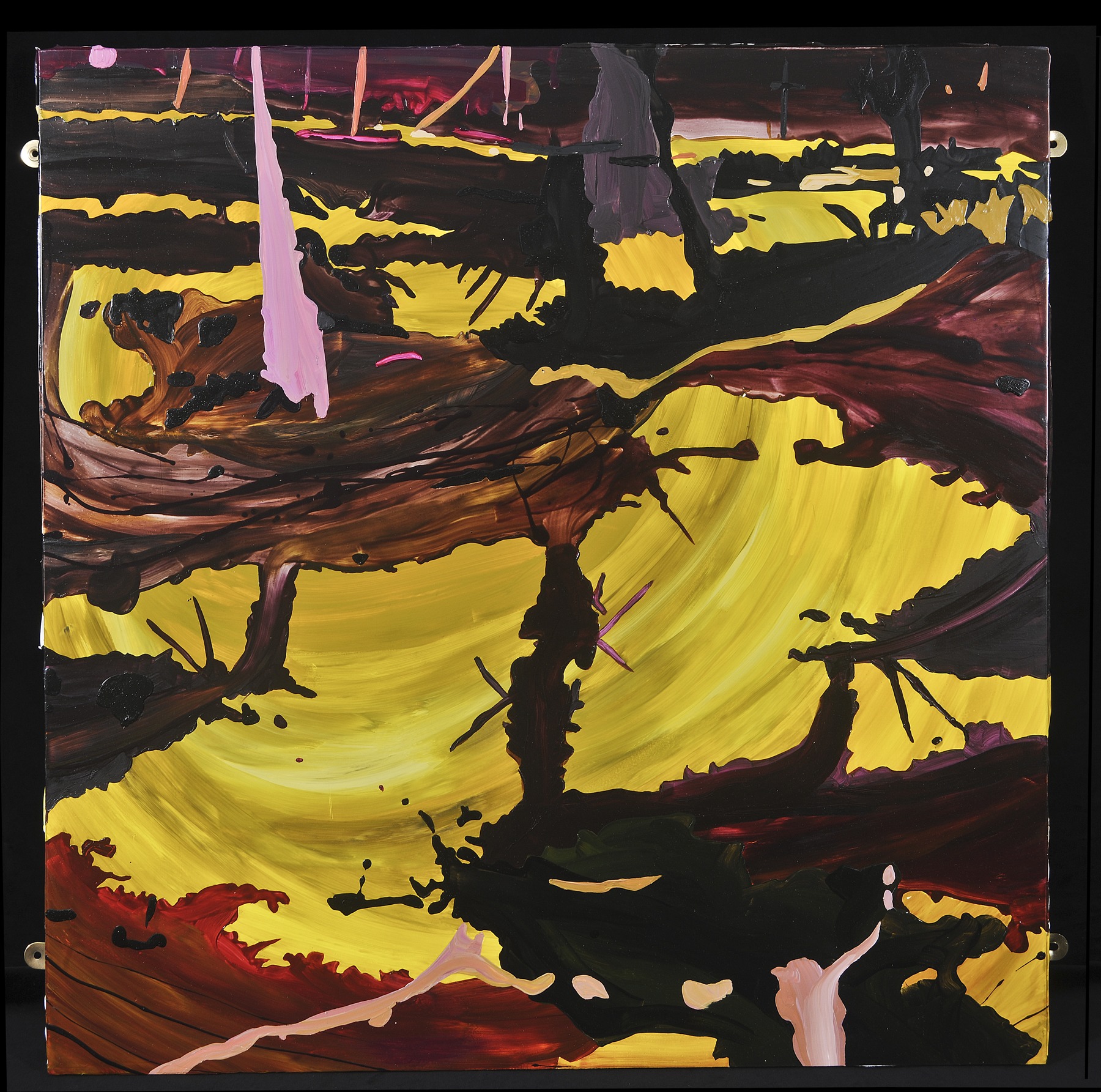Clare Woods paintings are derived from her photographs of undergrowth and vegetation, which are taken at night, often in desolate, contested or overlooked locations such as areas of scrub or deep woodland. Painstakingly transcribed using layers of enamel paint on aluminium, the resulting images are often ambiguous and disturbing, claustrophobic in their detail, and psychologically-charged.
Obscene Porridge (2012) is part of a body of work that found inspiration from a letter Paul Nash wrote to his wife from Passchendaele battlefield during the First World War. This particular work painting is connected to a black and white photograph of the Passchendaele battlefield and the artist Paul Nash’s description of it, “The rain drives on, the stinking mud becomes more evilly yellow, the shell holes fill up with green-white water, the roads and tracks are covered in inches of slime” (Paul Nash 18th November, 1917). The battlefield is infamous for the number of casualties and the mud which drowned soldiers and horses.
The painting complements Tullie House Museum & Art Gallery’s growing collection of landscapes which includes Keith Tyson’s Nature Painting, acquired in 2009. The museum also has an important collection of early watercolours and drawings by Paul Nash. The modern collection was acquired through a purchase scheme (1933-1975) under the guidance of William Rothenstein. Key artists purchased were Stanley Spencer, Wyndham Lewis, Vanessa Bell and David Nash. Tullie House’s rural surroundings of the Lake District have made landscape a key feature of the collection, an area the curators are keen to focus on.


